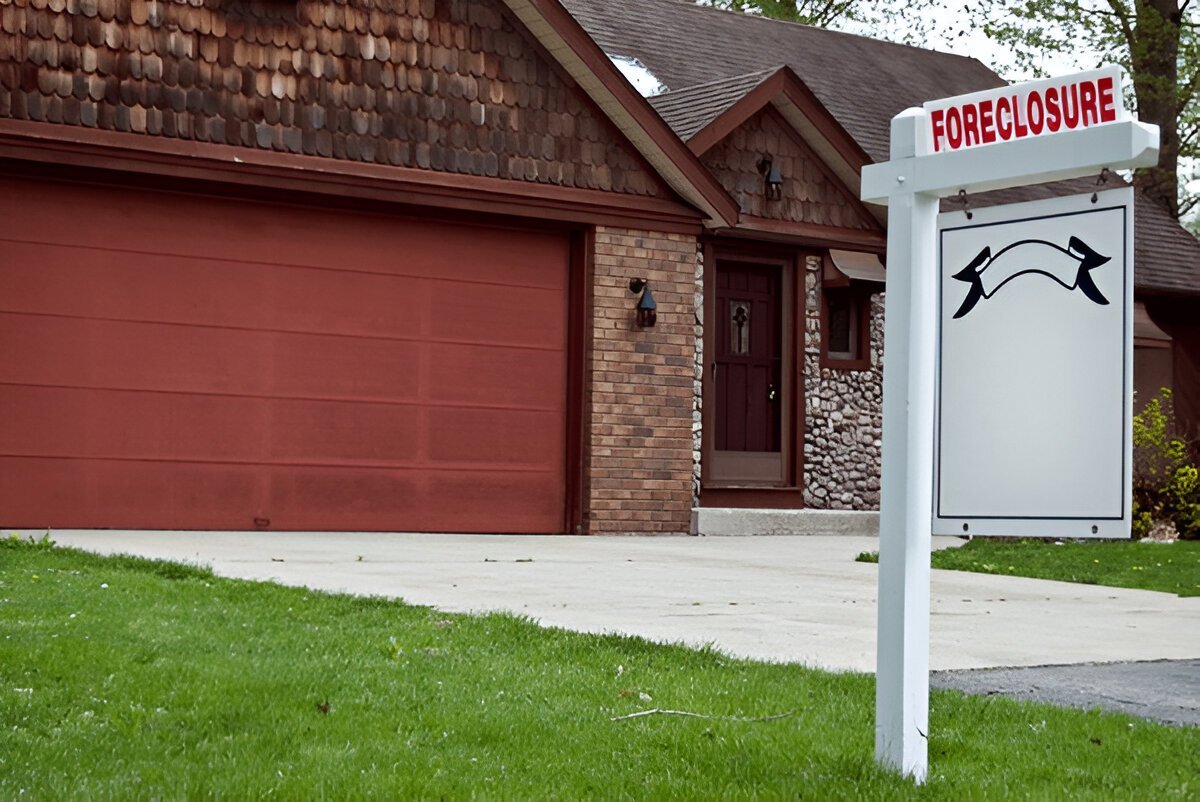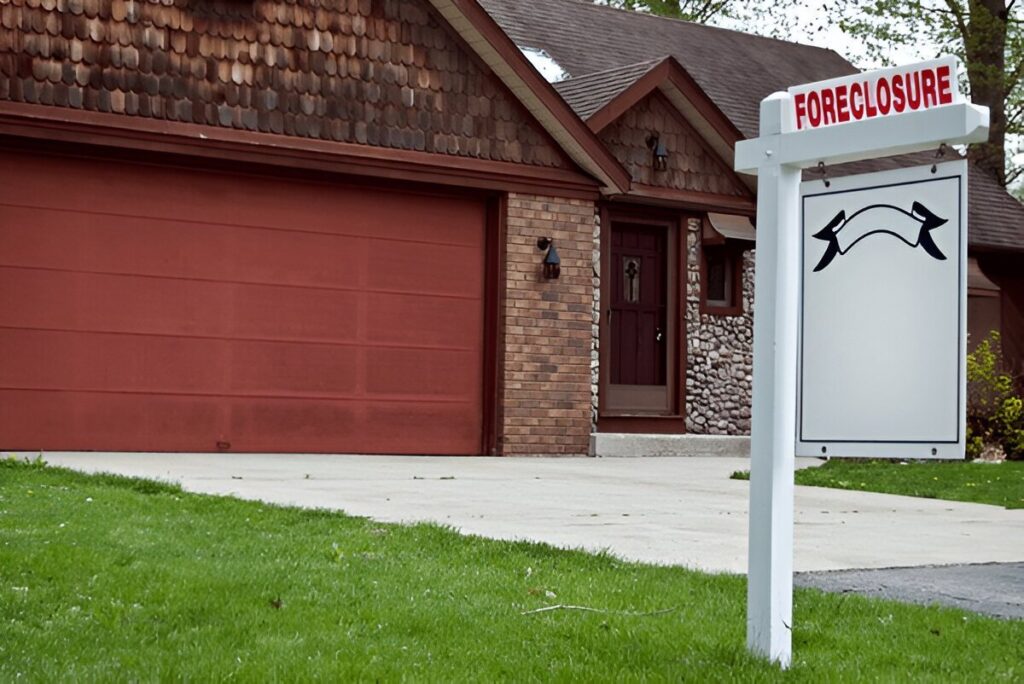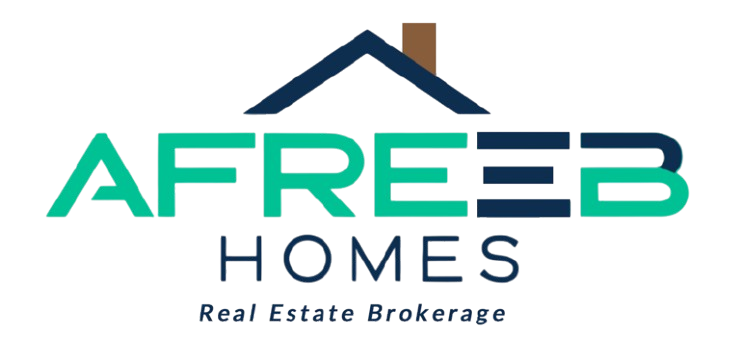
Foreclosure in Milwaukee: 5 Essential Steps & Solutions (2025)
Table of Contents

Foreclosure in Milwaukee: 5 Essential Steps & Solutions (2025)
Facing foreclosure in Milwaukee can be an incredibly daunting and stressful experience for homeowners. In Wisconsin, the foreclosure process is primarily judicial, meaning it involves court proceedings, which can offer homeowners a valuable window of opportunity to explore various solutions.
Understanding the specific steps involved in a foreclosure in Milwaukee action, from the initial missed payments to the final sheriff’s sale, is crucial for anyone navigating this challenging situation, as it empowers them to make informed decisions and potentially retain their home.
This comprehensive guide will outline the key stages of the foreclosure process in Milwaukee, Wisconsin, and shed light on the critical options available to homeowners to avoid losing their property.
Navigating the Alarming Reality of Foreclosure in Milwaukee
The prospect of losing one’s home due to financial hardship is a terrifying reality for many. In Milwaukee, Wisconsin, as in other parts of the country, economic shifts, job losses, health crises, or unexpected life events can push homeowners into the difficult situation of facing foreclosure in Milwaukee.
While it’s a challenging period, understanding the process and available options is the first and most critical step towards protecting your home and financial future. It’s imperative not to panic but to act swiftly and strategically. This guide provides a comprehensive overview of the foreclosure in Milwaukee process and practical solutions available to homeowners.
Understanding the Basics of Foreclosure in Wisconsin
In Wisconsin, foreclosure in Milwaukee proceedings are primarily judicial, meaning the lender must file a lawsuit in court to obtain a judgment allowing them to sell the property.
This differs from “non-judicial” foreclosures, which are faster and do not require court intervention. The judicial nature of foreclosure in Wisconsin provides homeowners with more time and opportunities to respond, seek legal counsel, and explore alternatives before their home is sold.
This legal pathway ensures that homeowners have specific rights and protections throughout the process, including mandatory notice periods and the right to redeem their property. Knowing these foundational elements is essential for anyone dealing with foreclosure in Milwaukee.
Why Milwaukee Homeowners Face Foreclosure
Homeowners in Milwaukee face foreclosure for a variety of reasons, often stemming from unforeseen financial challenges. Common triggers include:
Job Loss or Reduced Income: A significant and sudden drop in household income makes it difficult to meet mortgage obligations.
Medical Emergencies: High medical bills can quickly deplete savings and strain monthly budgets.
Divorce or Separation: Splitting household income and expenses can make a mortgage payment unaffordable for one party.
Adjustable-Rate Mortgage (ARM) Resets: Interest rates on ARMs can increase significantly, leading to higher monthly payments that become unaffordable.
Overextension: Taking on too much debt or buying a home that was at the very top of one’s budget leaves little room for financial setbacks.
Predatory Lending: In some cases, homeowners may have been victims of unfair or deceptive lending practices.
Regardless of the cause, understanding that these are often systemic issues, rather than personal failures, can help homeowners approach the foreclosure in Milwaukee situation with a clearer mind to seek effective solutions.
Read also: 7 Incredible Homes for Sale in Milwaukee Tips: Be Prepared!
5 Crucial Steps of the Foreclosure in Milwaukee Process
The foreclosure in Milwaukee process is a legal journey with distinct stages, each offering specific opportunities for homeowners to intervene and potentially save their property. Understanding these steps is paramount.
Step 1: Missed Payments and Notice of Default (Pre-Foreclosure)
The foreclosure in Milwaukee process typically begins when a homeowner misses several mortgage payments, usually three to six. At this point, the lender will send a Notice of Default or a Notice of Intent to Accelerate.
This formal letter informs the homeowner that their loan is in default, states the amount owed (including missed payments, late fees, and potential legal fees), and provides a specific deadline (often 30-90 days) by which the homeowner must cure the default to avoid further action.
This period, known as pre-foreclosure, is a critical window to communicate with your lender and explore options to reinstate your loan. Ignoring these notices will only escalate the situation.

Step 2: Filing of Summons and Complaint
If the homeowner fails to cure the default within the pre-foreclosure period, the lender will initiate the formal foreclosure in Milwaukee lawsuit by filing a Summons and Complaint with the circuit court in Milwaukee County.
This document legally notifies the homeowner that a foreclosure action has been filed against their property. Upon being served with these documents, the homeowner typically has 20 days to file a written response (an “Answer”) with the court. It is absolutely crucial to respond to this summons, even if you don’t believe you have a strong defense.
Failing to respond can result in a default judgment against you, making it much harder to fight the foreclosure later. This is often the point where consulting a foreclosure defense attorney becomes most urgent.
Step 3: Judgment of Foreclosure and Redemption Period
If the court finds that the homeowner is in default, or if the homeowner fails to respond to the summons, the court will issue a Judgment of Foreclosure. This judgment officially declares the amount owed and grants the lender the right to sell the property.
However, in Wisconsin, even after judgment, homeowners typically have a redemption period during which they can “redeem” their property by paying off the entire amount owed (including principal, interest, fees, and legal costs).
For owner-occupied residential properties in Wisconsin, this redemption period is usually six months, though it can sometimes be 12 months, or shorter if the property is vacant or non-owner occupied. This period provides a crucial last chance to secure financing, sell the property, or reach a resolution with the lender to avoid a sheriff’s sale.
Step 4: Foreclosure Sheriff’s Sale
If the homeowner does not redeem the property within the specified redemption period, the next step in the foreclosure in Milwaukee process is the Foreclosure Sheriff’s Sale. This is a public auction, typically held at the Milwaukee County courthouse, where the property is sold to the highest bidder.
The sale is conducted by the county sheriff or a designated auctioneer. The proceeds from the sale are used to satisfy the outstanding mortgage debt and cover the costs of the foreclosure process.

It’s important to note that the homeowner’s ability to live in the home typically ceases after the sheriff’s sale is confirmed by the court, but not necessarily immediately after the sale itself.
Step 5: Confirmation of Sale and Eviction
Following the sheriff’s sale, the court must confirm the sale. This is a legal step to ensure that the sale was conducted properly and fairly. Once the sale is confirmed, the new owner receives a Sheriff’s Deed, officially transferring ownership of the property. If the previous homeowner (the foreclosed borrower) has not yet vacated the property, the new owner will then need to initiate eviction proceedings to gain possession.
This involves a separate legal process, and a sheriff’s deputy will typically serve an eviction notice, giving the former homeowner a limited timeframe to vacate the premises. It’s crucial to understand that even at this stage, negotiating a “cash for keys” agreement (where the new owner pays the former owner to vacate quickly and peacefully) can sometimes be an option, saving both parties the time and cost of a formal eviction.
Powerful Solutions to Avoid Foreclosure in Milwaukee
Even when facing foreclosure in Milwaukee, homeowners have several powerful solutions they can explore to prevent the loss of their home. Proactive engagement with your lender and seeking professional advice are key.

Mortgage Reinstatement
Mortgage reinstatement involves paying the lender the entire past-due amount, including missed payments, late fees, and any foreclosure costs incurred by the lender, to bring the loan current. This is often the quickest way to stop a foreclosure, as it essentially undoes the default. It’s an ideal solution for homeowners who have experienced a temporary financial setback but now have the funds or access to them (e.g., from a bonus, tax refund, or family assistance).
Loan Modification
A loan modification involves permanently changing the original terms of your mortgage to make your monthly payments more affordable. This can include reducing the interest rate, extending the loan term, or even forgiving a portion of the principal balance. Lenders are often willing to consider modifications if it means avoiding the costly and time-consuming foreclosure process. This is a common solution for homeowners who have experienced a long-term reduction in income.
Forbearance Agreement
A forbearance agreement is a temporary arrangement with your lender that allows you to pause or reduce your mortgage payments for a specified period. This is often used during short-term financial hardships like temporary unemployment or medical leave. While payments are paused, interest may still accrue. At the end of the forbearance period, you will need to repay the paused amounts, either in a lump sum, through a repayment plan, or as part of a loan modification.
Short Sale
A short sale occurs when the homeowner sells the property for less than the amount owed on the mortgage, with the lender’s approval. The lender agrees to accept the sale proceeds as full or partial satisfaction of the debt. This option avoids foreclosure on your credit report but still results in you losing the home. It’s often pursued when the home’s value has significantly declined, and selling traditionally would not cover the outstanding mortgage.
Deed in Lieu of Foreclosure
A deed in lieu of foreclosure is an agreement where the homeowner voluntarily transfers the property’s title back to the lender to avoid the foreclosure process. This can be a less damaging option for your credit score than a full foreclosure, as it shows you cooperated with the lender. It’s typically considered when a homeowner knows they cannot afford the home and a short sale isn’t feasible.
Refinancing
Refinancing involves taking out a new mortgage to pay off your existing one. If you have enough equity in your home and your credit score has not been severely impacted by missed payments, refinancing into a new loan with more favorable terms (e.g., lower interest rate, longer term) could reduce your monthly payments and make them more manageable, thus avoiding foreclosure in Milwaukee.
Bankruptcy (Chapter 7 or Chapter 13)
Filing for bankruptcy, particularly Chapter 13, can temporarily stop a foreclosure in Milwaukee through an “automatic stay.” Chapter 13 allows you to reorganize your debts and create a repayment plan, which can include catching up on mortgage arrears over a period (typically 3-5 years) while continuing to make your regular payments.
Chapter 7 bankruptcy may discharge other debts, potentially freeing up funds for your mortgage, but it does not typically save the home long-term unless you can bring the mortgage current. Consulting a bankruptcy attorney is crucial to understand the implications for your specific situation.
The Critical Role of Legal Counsel in Foreclosure in Milwaukee
When facing foreclosure in Milwaukee, the legal complexities involved can be overwhelming. Attempting to navigate this process alone can lead to missed opportunities, costly mistakes, and ultimately, the loss of your home. This is where the critical role of experienced legal counsel becomes indispensable.
Why You Need an Attorney
A qualified foreclosure defense attorney deeply understands Wisconsin’s specific foreclosure laws and procedures. They can:
Assess Your Situation: Analyze your mortgage documents, lender communications, and financial circumstances to determine the best course of action.
Identify Defenses: Uncover potential legal defenses to foreclosure, such as predatory lending practices, lender errors, or violations of federal or state laws.
Negotiate with Lenders: Act as your advocate, negotiating with the lender on your behalf for loan modifications, forbearance agreements, short sales, or other alternatives. Lenders are often more responsive to attorneys.
Guide You Through Court: Represent you in court, file necessary motions and responses, and ensure your rights are protected throughout the judicial foreclosure process.
Explain Consequences: Clearly explain the legal and financial consequences of each decision, including the implications for your credit score and potential deficiency judgments.
Prevent Scams: Protect you from common foreclosure rescue scams that target vulnerable homeowners.
Finding the Right Foreclosure Defense Attorney
When seeking legal help for foreclosure in Milwaukee, look for an attorney specializing in real estate law, foreclosure defense, and potentially bankruptcy. Ask about their experience with similar cases in Milwaukee County courts. Check their professional reputation, read client reviews, and ensure they offer a clear understanding of their fees.
A good attorney will provide an initial consultation to discuss your situation and outline potential strategies. Don’t delay seeking legal advice; the earlier you engage an attorney, the more options you may have.
Milwaukee-Specific Resources for Foreclosure Assistance
Beyond legal counsel, homeowners facing foreclosure in Milwaukee can access a variety of local resources designed to provide support, information, and potential solutions.
Local Housing Counselors
HUD-approved housing counseling agencies in Milwaukee offer free or low-cost services to homeowners facing delinquency or foreclosure. These counselors can help you:
- Understand your mortgage and foreclosure options.
- Organize your financial documents.
- Prepare a budget.
- Communicate with your lender.
- Develop a financial action plan.
- Connect you with other local resources.
These services are invaluable for understanding the broader landscape of your options and preparing to communicate effectively with your lender.
City and County Programs
The City of Milwaukee and Milwaukee County may have programs aimed at assisting homeowners in distress. These can include:
Foreclosure Mediation Programs: Some courts offer mediation services to facilitate negotiations between homeowners and lenders outside of formal litigation.
Housing Stability Initiatives: Programs designed to help residents maintain housing, which might include rental assistance or homeowner support.
Property Tax Assistance: Resources for those struggling with property tax payments, which can also lead to foreclosure if left unpaid.
Check the official websites of the City of Milwaukee and Milwaukee County government for up-to-date information on available programs.
Legal Aid Services
For homeowners with limited income, legal aid organizations in Milwaukee can provide pro bono or low-cost legal representation for foreclosure defense. These organizations often have specific eligibility requirements, but they can be a lifeline for individuals who cannot afford a private attorney. Research Legal Aid Society of Milwaukee or similar non-profits in the area.
Understanding Deficiency Judgments in Wisconsin Foreclosure
An often-overlooked aspect of foreclosure in Milwaukee is the concept of a deficiency judgment, which can have significant financial implications for homeowners even after their property is sold.
What is a Deficiency Judgment?
A deficiency judgment occurs when a foreclosed property sells for less than the outstanding mortgage balance, plus the costs of the foreclosure. The difference between the sale price and the total debt is known as the “deficiency.” In some states, lenders can pursue a separate lawsuit to recover this deficiency from the former homeowner.
For example, if you owe $200,000 on your mortgage, and the property sells at a sheriff’s sale for $150,000, there’s a $50,000 deficiency. A deficiency judgment would legally hold you responsible for that $50,000.
How It Applies in Milwaukee Foreclosures
In Wisconsin, lenders can pursue a deficiency judgment against homeowners following a judicial foreclosure in Milwaukee. This means that even after your home is sold at a sheriff’s sale, you could still owe money to the lender.
The ability to seek a deficiency judgment can be influenced by factors such as whether the loan was recourse or non-recourse, and the specific terms of the mortgage agreement.
It’s crucial to discuss the potential for a deficiency judgment with your foreclosure defense attorney. They can advise you on strategies to avoid or mitigate this outcome, such as negotiating with the lender during a short sale or deed in lieu of foreclosure, where lenders may agree to waive the deficiency in exchange for your cooperation.
Bankruptcy can also potentially discharge deficiency judgments, depending on the type of bankruptcy filed and individual circumstances.
Conclusion: Empowering Your Path Through Foreclosure in Milwaukee
Facing foreclosure in Milwaukee is undoubtedly a challenging ordeal, but it is not a battle you have to face alone. Understanding the intricate steps of the Wisconsin judicial foreclosure process, from the initial notice of default to the final confirmation of sale, empowers you to take control of your situation.
More importantly, recognizing the array of powerful solutions available – from loan modifications and forbearance to strategic sales and bankruptcy – provides a roadmap for potentially saving your home or at least mitigating the financial impact.
The absolute key to navigating this crisis successfully is proactive engagement and seeking professional guidance. Do not ignore communications from your lender, and do not hesitate to consult with an experienced foreclosure defense attorney and HUD-approved housing counselors in Milwaukee.
These professionals are your strongest allies, equipped to assess your unique circumstances, negotiate on your behalf, and guide you through the legal complexities. By taking decisive action and utilizing the resources available, you can empower your path through foreclosure in Milwaukee and work towards a more stable financial future.
Your home, and your peace of mind, are worth fighting for.
Follow us on our Instagram Page for more exciting updates!
FAQs About Foreclosure in Milwaukee
How long does the foreclosure process typically take in Milwaukee, Wisconsin?
In Milwaukee, due to Wisconsin’s judicial foreclosure process, it can take anywhere from 6 months to over a year, or even longer, from the first missed payment to the final sheriff’s sale and eviction. This timeline depends on court schedules, whether the homeowner contests the foreclosure, and if mediation or loan modification attempts are made.
What is a “redemption period” in a Milwaukee foreclosure?
The redemption period is a mandatory waiting period in Wisconsin (typically 6 months for owner-occupied homes, sometimes 12 months, or shorter for vacant properties) after a foreclosure judgment is entered. During this time, the homeowner can “redeem” the property by paying the full amount owed to the lender, including arrears, fees, and costs, to stop the foreclosure sale.
Can I stop a foreclosure in Milwaukee even if I’ve received a summons?
Can I stop a foreclosure in Milwaukee even if I’ve received a summons?
A3: Yes, receiving a summons is a critical point to act. You still have options, including responding to the complaint, negotiating a loan modification, pursuing a short sale, or filing for bankruptcy. It is highly recommended to seek legal counsel immediately upon receiving a summons.
What’s the difference between a short sale and a deed in lieu of foreclosure in Milwaukee?
In a short sale, you sell your home for less than what you owe, with the lender’s approval. In a deed in lieu of foreclosure, you voluntarily transfer the property’s title back to the lender to avoid the formal foreclosure process. Both result in losing the home but can be less damaging to your credit than a full foreclosure and may help you avoid a deficiency judgment.
Will filing for bankruptcy stop a foreclosure in Milwaukee?
Yes, filing for bankruptcy (especially Chapter 13) triggers an “automatic stay,” which temporarily stops foreclosure in Milwaukee proceedings. Chapter 13 allows you to propose a repayment plan for your mortgage arrears over several years while continuing regular payments. Chapter 7 can also provide a temporary stay but typically does not save the home long-term unless you can bring the mortgage current.
Where can I find free help with foreclosure in Milwaukee?
You can find free or low-cost assistance from HUD-approved housing counseling agencies in Milwaukee, local legal aid societies (if you qualify based on income), and potentially through foreclosure mediation programs offered by the Milwaukee County court system.
Can a lender pursue me for a “deficiency judgment” after foreclosure in Wisconsin?
Yes, in Wisconsin, lenders generally have the right to pursue a deficiency judgment. This means if your home sells at foreclosure for less than what you owe on the mortgage, plus costs, the lender can sue you for the difference. It’s crucial to discuss this potential outcome with your attorney and explore options to avoid it.
